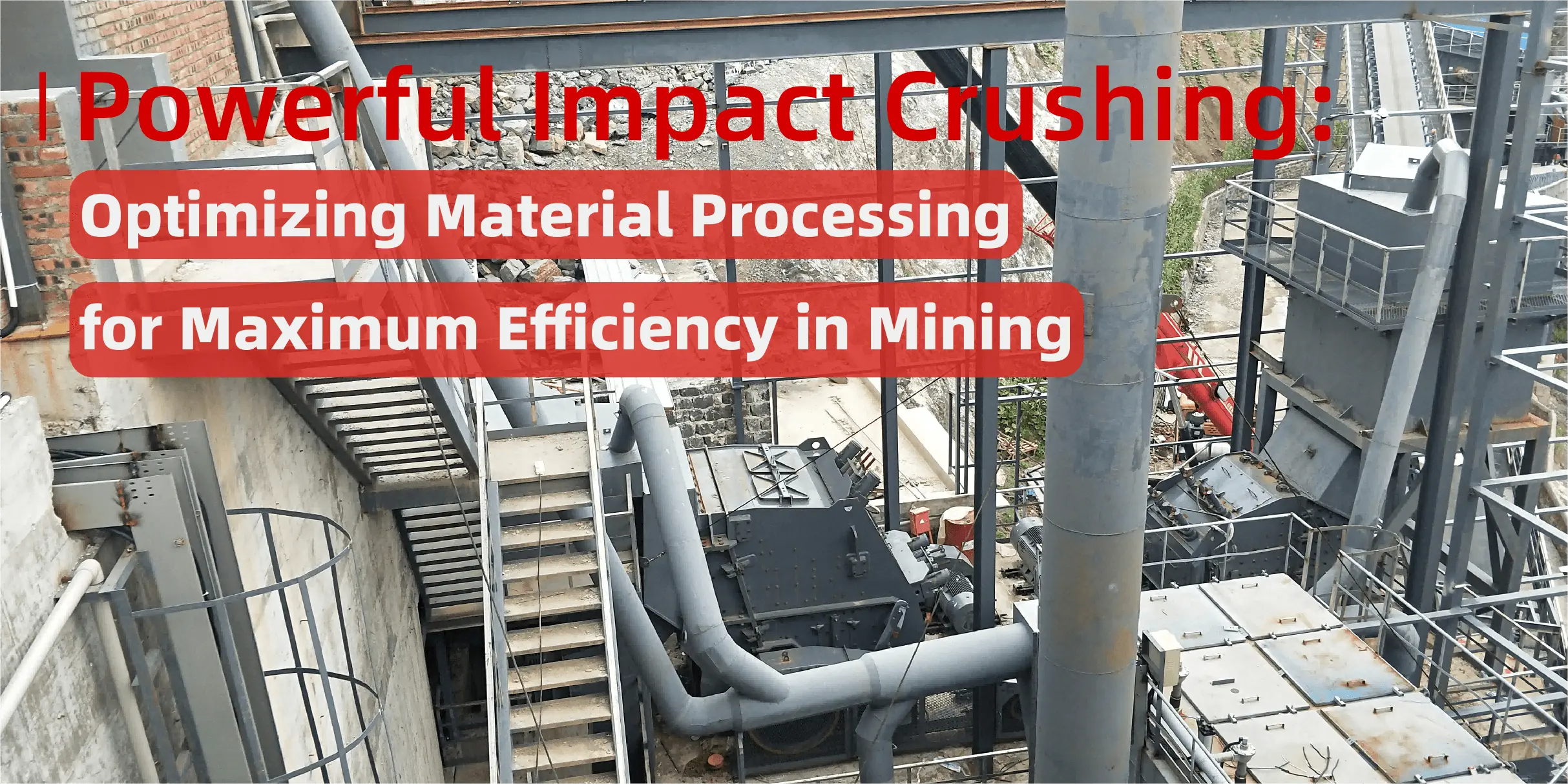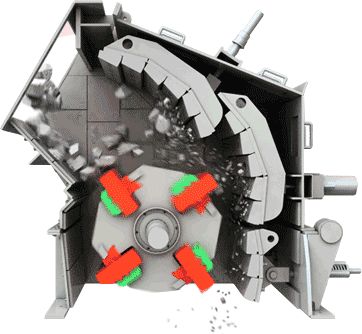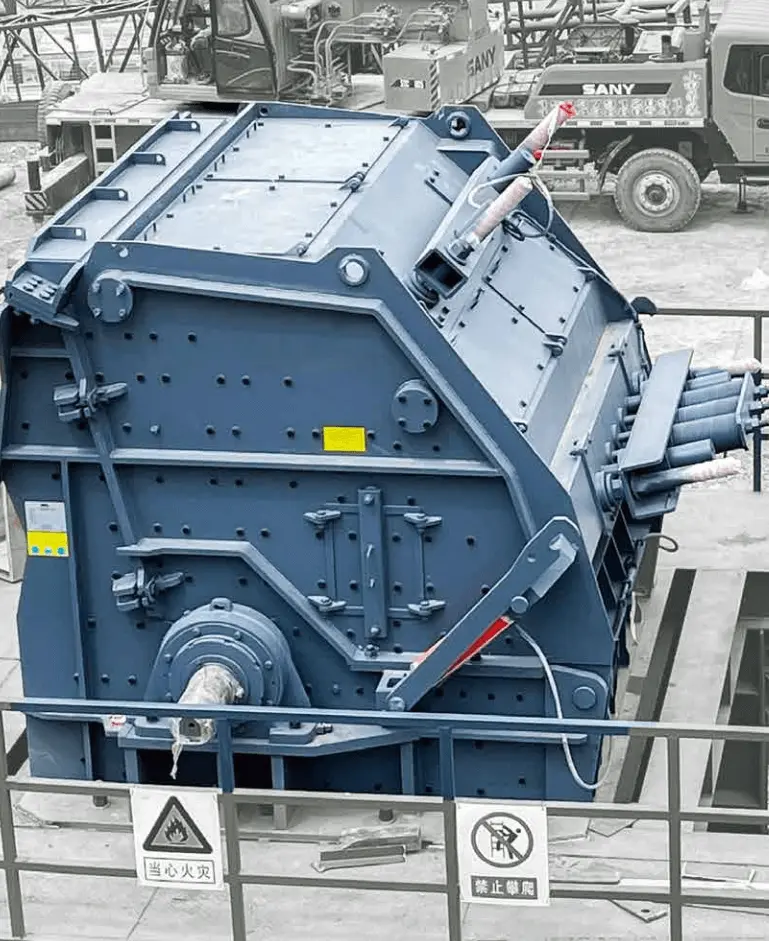
How Impact Crushers Boost Efficiency in Mining
Impact crushers are an essential tool in mining, widely used to reduce the size of materials such as rocks, ores, and aggregate. Their ability to produce high-quality and uniform products with minimal fines makes them a valuable asset in the mining industry. In this article, we will explore how impact crushers work, their advantages, and how they boost efficiency in mining operations.
In this comprehensive guide, we’ll dive into the various parts of a jaw crusher, their functions, common issues, and the best maintenance practices to keep your equipment running efficiently.
Introduction to Impact Crushers

An impact crusher is a type of crushing machine used in mining, construction, and aggregate industries to break down various materials. The core components of an impact crusher include the rotor, blow bars, and impact plates, which are designed to handle high-impact forces while breaking down hard materials.
Impact crushers work by utilizing the impact force of the moving rotor to strike the material. The material is thrown against the impact plates, breaking it into smaller pieces. This mechanism allows for the production of a finely crushed material with the desired size and shape, making it ideal for both primary and secondary crushing in mining operations.
The Working Principle of Impact Crushers
Impact crushers work on a simple but effective principle. When the material enters the crusher, it is first fed into the rotor, which is spun at high speed. The rotor's velocity allows it to collide with the material and break it into smaller particles. The material is then directed toward the impact plates, where it is further crushed before exiting the machine.
There are two primary types of impact crushers:
- Horizontal Shaft Impactors (HSI): The material is fed into the crusher, where it is impacted by high-speed rotors. HSI crushers are commonly used in secondary and tertiary applications and are suitable for medium to low hardness materials.
- Vertical Shaft Impactors (VSI): These crushers are used for producing high-quality sand and aggregates, especially in applications where the material needs to be crushed into a finer, more uniform product. VSI crushers are commonly used in construction and aggregate production.
Impact Crushers vs. Other Crushers: Efficiency Comparison
When compared to other common crushers like jaw crushers or cone crushers, impact crushers offer distinct advantages in terms of efficiency, particularly in operations involving softer or less abrasive materials.
Here's how they compare:
- Energy Consumption: Impact crushers typically consume less power than jaw crushers due to their high-speed rotor mechanism, leading to a reduction in operational energy costs.
- Feed Size: Impact crushers are ideal for smaller feed sizes. While jaw crushers can handle larger, more coarse materials, impact crushers excel at finer particle size reduction.
- Material Shape: Impact crushers produce a more cubical product compared to jaw crushers, which typically generate more angular material. This shape is particularly desirable in the aggregate industry, where a more uniform product is required.
Boosting Efficiency in Mining Operations
Impact crushers are engineered for high efficiency and can provide numerous benefits in mining operations:
- Faster Processing: The high-speed rotor and impact forces enable impact crushers to process materials more quickly than other crushers, enhancing overall throughput.
- Consistent Product Quality: The ability of impact crushers to generate a uniform product size helps minimize the need for further processing or screening. This reduces the overall cost of operations and ensures that the material meets specific specifications.
- Reduced Fines: Unlike jaw crushers, which often produce excessive fines, impact crushers tend to produce less material in the finer particle range, leading to improved product quality and fewer handling costs.
Additionally, impact crushers can be customized for different applications, whether it be for softer materials like limestone or for more abrasive materials like granite or ores. This adaptability is crucial in improving mining efficiency.
Advantages of Using Impact Crushers in Mining

The benefits of using impact crushers in mining extend beyond just processing speed. Key advantages include:
- High Throughput: Impact crushers are designed to process large quantities of material quickly, which increases the overall production capacity of mining operations.
- Energy Efficiency: Thanks to their ability to process materials more quickly and with less power consumption, impact crushers are considered more energy-efficient than many other types of crushers.
- Lower Wear and Tear: With fewer moving parts than jaw crushers, impact crushers generally experience less wear and tear, which reduces maintenance costs and downtime.
- Improved Material Shape: The nature of impact crushing produces materials that are more rounded and consistent, which is highly desirable for applications like road construction and concrete production.
Versatility in Material Handling
One of the standout features of impact crushers is their versatility in handling a wide variety of materials. These crushers can be used to process:
- Hard Rocks: Impact crushers are capable of processing harder materials like granite, basalt, and quartz.
- Soft Rocks: They are also ideal for softer materials such as limestone and gypsum.
- Recycled Materials: Impact crushers are commonly used in recycling operations to process materials like concrete, asphalt, and demolition debris.
This versatility allows mining operations to efficiently process a wide range of materials, improving productivity and maximizing return on investment.
Key Features That Enhance Efficiency in Impact Crushers
Several features of modern impact crushers contribute to their superior efficiency in mining:
- Adjustable Discharge Settings: Many impact crushers come with adjustable settings that allow operators to control the output size and shape of the material. This flexibility is key to meeting specific project requirements.
- Heavy-Duty Construction: Impact crushers are built to handle demanding mining environments, with durable components that can withstand continuous operation in harsh conditions.
- Automation and Digitalization: Advances in automation and digital controls allow for remote monitoring, real-time performance tracking, and predictive maintenance, further boosting efficiency.
Real-World Examples of Impact Crushers in Mining
Impact crushers have already proven to be highly effective in real-world mining applications. Here are some examples:
- Aggregates Production: In aggregate production, impact crushers are widely used to produce high-quality, uniform material for use in road construction, concrete, and other infrastructure projects.
- Gold Mining: In gold mining operations, impact crushers are used to reduce ore to a manageable size for further processing, ensuring higher yield and more efficient extraction.
- Recycling Operations: In recycling plants, impact crushers help process materials such as concrete, asphalt, and glass, allowing for the recovery of valuable resources.
Future Trends in Impact Crusher Technology
As mining operations continue to evolve, impact crushers are also undergoing advancements. Some emerging trends include:
- Hybrid Power Systems: Hybrid-powered impact crushers that combine diesel and electric motors are becoming more common, offering better fuel efficiency and lower emissions.
- Automation and Artificial Intelligence: The integration of AI and IoT technologies in impact crushers enables predictive maintenance, automatic adjustments, and enhanced performance tracking, which improves long-term efficiency.
- Increased Wear Resistance: New materials and coatings are being developed to enhance the durability and longevity of impact crushers, reducing the frequency of maintenance and replacement of parts.
Impact crushers play a critical role in boosting efficiency in mining operations by providing high throughput, energy savings, reduced wear and tear, and consistent product quality. Their versatility, combined with modern technological advancements, makes them an invaluable tool in the mining industry. As mining operations continue to face new challenges, the evolution of impact crushers will further enhance their ability to improve productivity and reduce operational costs.
Recent articles
- Rock Crushers Unveiled: All the Insider Secrets You Must Know
- Crushing Equipment: An In - Depth Exploration
- Crushed Concrete: The Rise and Application of Sustainable Construction Materials
- Everything You Need to Know about Jaw Crushers and Mobile Jaw Crushers
- Everything You Need to Know About Buying and Renting Rock Crushers
- Jaw Crusher vs Cone Crusher: Performance Showdown – How to Choose the Right One for Your Needs
- Unraveling the Mysteries of Screening and Crushing Equipment: Your Comprehensive Guide
- what are impact crushers in concrete production
- Why Choose OEM Parts for Your Crusher? The Advantages of OEM Over Aftermarket
- Rock Crushers & Portable Rock Crushers: All You Need for Mining, Construction & Industrial Use
- Exploring Jaw Crusher Efficiency: Innovation, Applications, and Real-World Impact
- Why High-Performance Concrete Crushers Are Essential: Revolutionizing Recycling and Aggregate Production
- How to Choose the Right Rock Crusher for Your Project: In - depth Analysis of 7 Portable Equipment Types
- Portable Rock Crushers: Redefining Waste Management and Aggregate Production in the Circular Economy Era
- Portable Rock Crushers: Redefining Waste Management and Aggregate Production in the Circular Economy Era

.webp)


